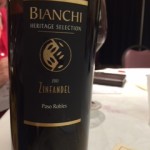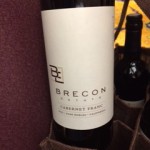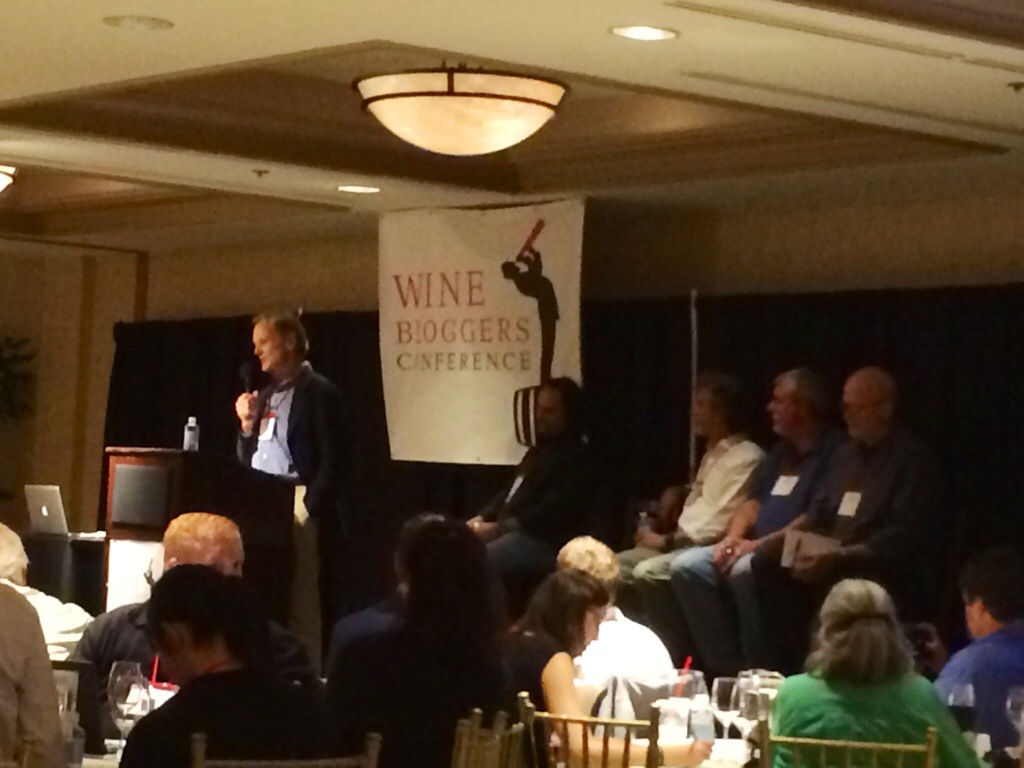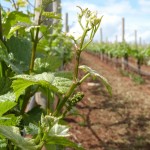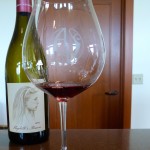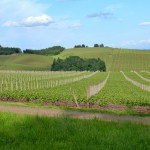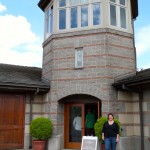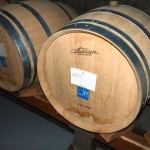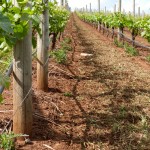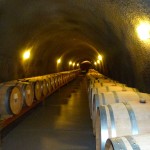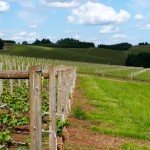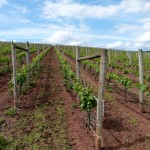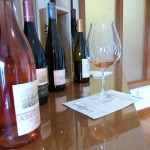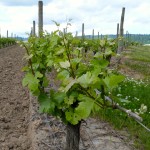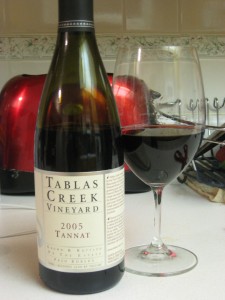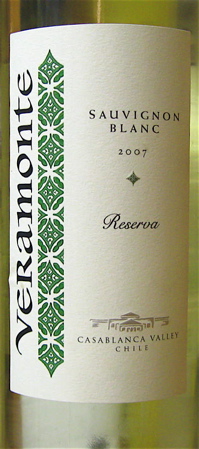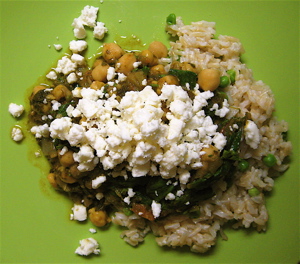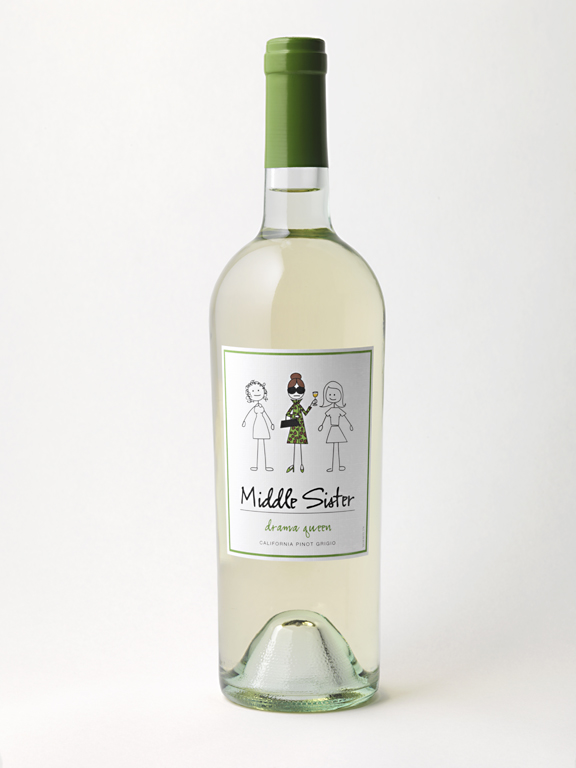 My dear friend spent a decompression day at my house after SXSW Interactive, and brought me this wine, which she says someone dropped off at the WordPress booth.
My dear friend spent a decompression day at my house after SXSW Interactive, and brought me this wine, which she says someone dropped off at the WordPress booth.
Free! Free wine is my favorite price.
I confess that the marketing of this wine has me on the fence. I like accessible, approachable wines that straight-up tell you what to expect. I especially like them when they’re affordable and easy to find. I feel happy when they help people feel more comfortable with drinking wine, a beverage that so often is perceived as exclusionary and snobbish.
But I don’t like it when I feel I’m being pandered to, and I recognize it’s a fine line. The Middle Sister wine brand is one of ten brands developed/owned by Canopy Management. Their brands all “tell a story,” which to my ear means that what’s selling the wine is the marketing/packaging, and not necessarily the wine’s flavor or quality. Which, to be fair, could be said about nearly any foodstuff or beverage that I have not tried already or researched before buying. So, OK: hall pass.
Canopy Management also owns a company (site? group? concept?) called Wine Sisterhood, which describes itself as “celebrating and sharing the world of wine from the female point of view,” and encourages people (women people, presumably), to “actively participate in the creation of the next new hot wine brand.”
All this is prompted by the fact that women drink more of the wine in this country. Plus, we do most of the shopping. The wine industry wants to figure out how to get women to buy their wine, stat.
Enter Canopy Management and their Middle Sister brand. It’s ingenious in many ways; it fulfills the consumer’s need for personalize-able variety. It appeals to the oft-ignored middle sister, and every woman, no matter her birth ranking, has felt like the ignored girl. Each wine has its own “personality;” what’s more, on their website, you can take a Cosmo-style quiz to see “which middle sister you are.”
It’s been a while since I’ve done a magazine quiz… and guess what? My Middle Sister Wine Personality is actually the wine that had randomly been brought to me! Spooky! Fate! Something!
Here’s my Middle Sister Wine Personality synopsis (with comments):
 “You’re a Drama Queen. Nobody does quite like you do.* You like to make an entrance. You know the best color/cut/face/eyebrow/wax lady.** You are friends with the bartender, the chef, the kid who started Face Book and the mayor.*** You’re a social butterfly.**** When it’s time to land, it’s poolside in South Beach with a glass of Middle Sister Drama Queen Pinot Grigio. And a cabana boy.*****
“You’re a Drama Queen. Nobody does quite like you do.* You like to make an entrance. You know the best color/cut/face/eyebrow/wax lady.** You are friends with the bartender, the chef, the kid who started Face Book and the mayor.*** You’re a social butterfly.**** When it’s time to land, it’s poolside in South Beach with a glass of Middle Sister Drama Queen Pinot Grigio. And a cabana boy.*****
This actually describes some women I love dearly, who wish I would buy sassier shoes and less schlubby clothes (and probably, secretly, that I would wax my eyebrows). I like to take them shopping with me, because then I look much more elegant than I would if I dressed myself. But I have yet to discover what this persona has to do with Pinot Grigio or those who like it. And, while I enjoy being arbitrarily how fabulous I am by a quiz just as much as the next gal, it’s a reach to connect gender to personality to wine preference, if you ask me.
Anyhow, let’s taste what’s IN the bottle, shall we?
Pale straw yellow in the glass. Nose of pear, lime and melon. Very heavy honeydew on the palate, with a spritz of lemon and a white grape juice finish. Not frightfully… dramatic per se, but quite pleasant and easy to drink. Keep it cold – when at a cool room’s temperature, it gets a little clunky.
Brass tacks: if you like kitschy wine labels or gimmick names, I can extrapolate from this one wine’s quality that Middle Sister makes drinkable, uncomplicated wines which will not let you down. The Drama Queen is very pleasant. I will mention that when I want a wine to “tell a story,” I prefer the story to be about a region, a grape or a winery’s vision.
*(thanks, that’s very kind and pretty much true of everyone)
**(Actually, I don’t know any of these people; I go to the salon about every 6 months, and have never waxed anything, ever.)
*** (Except for the last three.)
****(more of a groundhog – oops! shadow!)
*****(If his name is Tom.)
 The folks at Santa Margherita USA sent me some samples for review this week, with the understanding that I don’t guarantee reviews for samples, etc etc.
The folks at Santa Margherita USA sent me some samples for review this week, with the understanding that I don’t guarantee reviews for samples, etc etc. 

